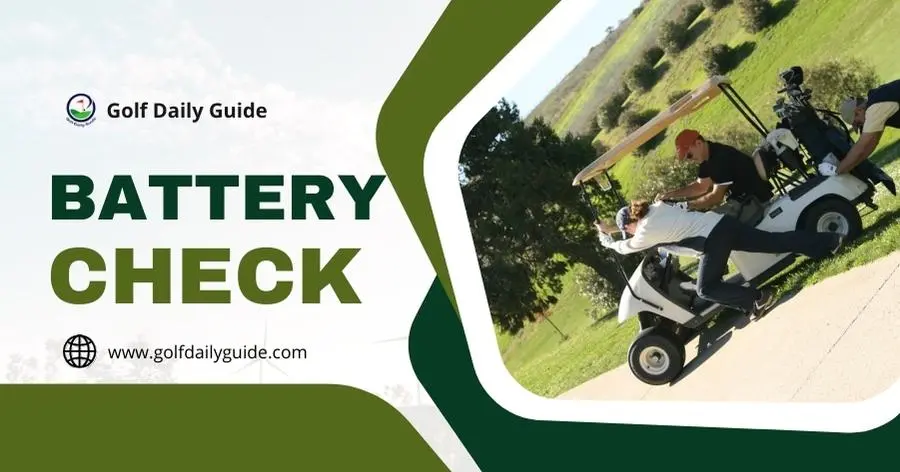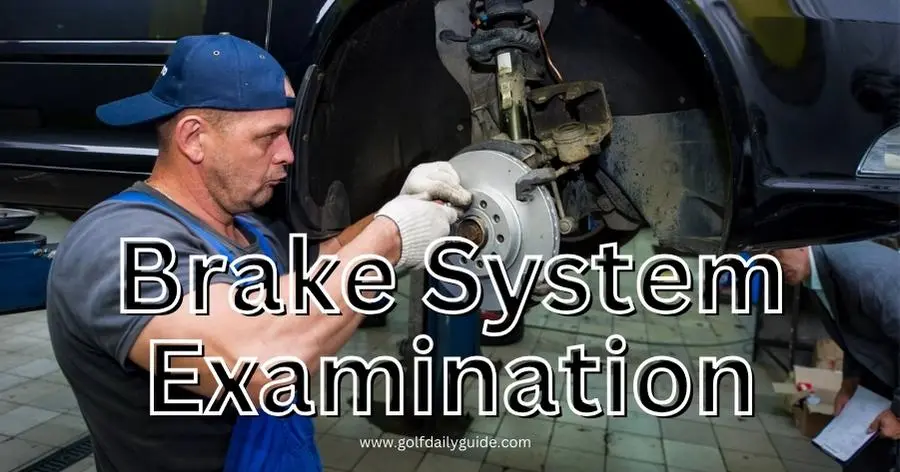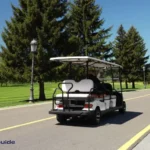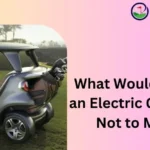If you find yourself facing a frustrating situation where your golf cart won’t move despite being fully charged, you’re not alone. This issue can be perplexing, but there are several common reasons behind it.
In this troubleshooting guide, I will explore potential causes and solutions to help you get your golf cart back in motion.
From electrical problems to mechanical issues, understanding the possible factors affecting your golf cart’s performance is crucial in resolving the “My Golf Cart Won’t Go But is Fully Charged” dilemma.
So, Let’s delve into the troubleshooting process to identify and address the root cause of the problem, ensuring you can enjoy a smooth and hassle-free ride on the greens.
Common Issues
If your golf cart won’t move even though it is fully charged, there are a few common issues that could be causing this problem.
By understanding these issues, you can troubleshoot and fix the problem, getting your golf cart back on the green in no time.
1. Battery Connectivity
Basically, A common issue that can prevent your golf cart from moving is poor battery connectivity. If the battery cables are loose or corroded, it can disrupt the flow of power to the motor.
Check the battery terminals and cables for any visible signs of corrosion or damage. If necessary, clean or replace the cables and ensure they are securely attached to the battery terminals.
This simple step can often resolve the issue and get your golf cart moving again.
2. Motor Problems
Another potential cause of a fully charged golf cart not moving is motor problems. Over time, the motor can wear out or develop faults that prevent it from functioning properly.
If you suspect motor issues, it is best to consult with a professional technician who can diagnose and repair the problem. They will be able to assess the motor and determine if it needs to be repaired or replaced.
Motor problems may require more complex repairs, so seeking professional assistance is recommends.
3. Brake System
The brake system is another area to consider if your golf cart willn’t go but is fully charge. It’s possible that the brake system may be engage or malfunctioning, causing the cart to not move.
Check the brake pedal and ensure it is fully disengage. If the brake pedal is stuck or the brake system is not functioning correctly, it might need to be repaired or replaced.
A professional technician can inspect and repair the brake system to ensure it is in proper working order, resolving the movement issue you’re experiencing.
Battery Check
A fully charged golf cart that refuses to go can be a frustrating experience. However, before you go into panic mode, it’s important to conduct a thorough battery check.

In this section, I will explore the necessary steps to identify potential issues with your golf cart’s battery.
1. Visual Inspection
A visual inspection is the first step in determining the health of your golf cart’s battery. Take a close look at the battery terminals to ensure they are clean and free from any corrosion or buildup.
Corrosion can prevent the proper flow of electricity, resulting in a malfunctioning golf cart. So, Inspect the battery casing for any cracks, leaks, or bulging.
A damaged battery casing can lead to acid leaks which can not only affect the performance of your golf cart but can also pose a safety hazard.
Additionally, check the battery connections to ensure they are tightened securely. Loose connections can disrupt the power flow and prevent your golf cart from operating correctly.
2. Voltage Test
Performing a voltage test on your golf cart’s battery is a critical step in diagnosing the issue. To do this, you’ll need a multimeter.
First, turn off the golf cart’s power and ensure it is in neutral. Set your multimeter to the DC voltage setting and connect the positive (red) probe to the positive battery terminal and the negative (black) probe to the negative terminal.
Take note of the voltage reading displayed on the multimeter. A fully charged battery should have a voltage reading of around 48-51 volts.
If the voltage reads significantly lower than this, it indicates a potential problem with the battery.
- If the voltage reading is lower than expected, check the battery’s water levels and top up if necessary. Low water levels can cause poor battery performance.
- Ensure that all battery cables are securely connected and free from any damage.
- If the voltage reading is still too low, it may be time to consider replacing the battery with a new one.
By conducting a visual inspection and voltage test, you can quickly identify and resolve potential battery issues that may be causing your golf cart to not function properly.
Remember, a healthy battery is vital for optimal performance and enjoyment on the golf course.
Motor Assessment
When your golf cart won’t go even though it is fully charge, it can be frustrating and impact your round. One of the key components to check during this issue is the motor.
A thorough motor assessment can help identify the root cause of the problem and get your golf cart back in action.
Let’s dive into the essential aspects of motor assessment, starting with the brushes and commutator.
1. Brushes And Commutator
Inspect the brushes to ensure that they are in good condition and make proper contact with the commutator. Brushes that are warn out or damage can cause the motor to malfunction.
The commutator shall be checke for signs of wear and tear, such as pitting or discoloration.
So, Cleaning the commutator and replacing the brushes if necessary can resolve issues related to motor performance.
2. Solenoid Testing
Basically, The solenoid plays a crucial role in the motor’s functioning. Start by testing the solenoid to verify that it is receiving and transmitting power appropriately.
Measure the voltage across the solenoid terminals with a multimeter to identify any irregularities.
If the solenoid fails the test, it may need to be replace to restore the motor’s functionality.
Brake System Examination
When your golf cart is fully charge but refuses to move, the issue may lie with the brake system.
Conducting a thorough examination of the brake components is crucial to identifying and resolving the problem.

I will cover the steps involved in the brake system examination, focusing on brake adjustment and cable inspection.
1. Brake Adjustment
One of the common reasons why a fully charged golf cart won’t go is due to inadequate brake adjustment.
Finally, If the brake shoes are not properly aligne with the drum, it can lead to excessive brake drag, preventing the cart from moving forward.
To check the brake adjustment:
- Engage the parking brake to secure the golf cart.
- Locate the brake adjustment mechanism, typically found on the rear of the brake drum.
- With a suitable wrench, turn the adjustment mechanism clockwise to tighten and counterclockwise to loosen the brakes.
- Ensure the brake shoes are positioned correctly against the drum and adjust as necessary until the desired brake tension is achieved.
So, A properly adjusted brake system will improve the cart’s performance and allow it to move freely.
2. Cable Inspection
Inspecting the brake cables is another important step in diagnosing why your golf cart won’t go.
Over time, cables can wear, fray, or become misaligned, hampering the overall function of the brakes.
Here’s how to inspect the brake cables:
- Start by locating the brake cables, typically running from the brake pedal to the brake mechanism.
- Visually inspect the cables, looking for any signs of damage such as fraying, kinks, or corrosion.
- If any damage is found, carefully replace the affected cables with new ones of the appropriate length and size.
- Ensure that the cables are properly aligned and securely attached at both ends.
A thorough inspection and maintenance of the brake cables will help ensure smooth and reliable operation of the brake system, allowing your golf cart to function as expected.
By examining the brake system and addressing any issues related to brake adjustment and cable inspection, you can troubleshoot why your golf cart won’t go despite being fully charged.
These simple steps can help restore the functionality of your golf cart, allowing you to enjoy your next round of golf without any hiccups.
Electrical Connections
When it comes to troubleshooting a golf cart that won’t go but is fully charge, one of the first areas to investigate is the electrical connections. Issues with the wiring harness or a blown fuse could be the cause of the problem.
In this section, I will explore these potential culprits and how to inspect them.
1. Wiring Harness
A faulty or loose wiring harness can prevent power from reaching the golf cart’s motor, resulting in it not moving even when fully charged.
Here are a few steps to check the wiring harness:
- Begin by visually inspecting the wiring harness for any obvious signs of damage, such as frayed wires or disconnected connections.
- If any issues are detected, they will need to be repaired or replaced.
- Next, use a multimeter to test the continuity of each wire within the harness. Start at one end and work your way through, checking for any breaks or inconsistencies in the readings. If a wire is found to be faulty, it will need to be repaired or replaced.
- In some cases, the wiring harness may have become loose or disconnected from its designated location. Take the time to ensure that all connections are secure and properly plugged in.
2. Fuse Inspection
A blown fuse can disrupt the flow of electricity to various components of the golf cart, resulting in a lack of power.
Follow these steps to inspect the fuses:
- Locate the fuse box, which is typically found in the golf cart’s battery compartment or under the seat. Remove the cover to gain access.
- Inspect each fuse visually, looking for any signs of damage, such as a broken filament or discoloration. If a fuse appears to be blown, it will need to be replaced with a new one of the same amperage rating.
- Using a multimeter set to the “continuity” or “ohms” setting, test each fuse to ensure that it is still functioning properly. Place one probe on each end of the fuse and check for a reading of zero or close to zero. If a fuse fails this test, it should be replaced.
When your golf cart won’t go but is fully charge, it’s important to inspect the electrical connections, including the wiring harness and fuses.
By following these steps, you may be able to identify and resolve the issue, restoring the functionality of your golf cart.
What should my golf cart charger read when fully charged?
When your golf cart is fully charge, your charger shall read “100% or Full.” This is like the green light saying, “Hey, your cart is juice up and ready to roll!”

Keep an eye out for that satisfying indicator, and you’ll know your golf cart is all set for your next adventure on the course.
How long to fully charge a golf cart?
Charging your golf cart is a bit like giving it a power nap. On average, it takes around 8 to 12 hours to fully charge a golf cart.
Think of it as a good night’s sleep for your car’s battery – it needs that time to get energized and ready for a day on the greens.
So, plug it in, let it chill, and by the time you’re back, your golf cart should be all bright-eyed and bushy-tailed, ready for another round!
Can I unplug my golf cart before fully charged?
Unplugging your golf cart before it’s fully charge won’t harm it. Think of it like grabbing your phone off the charger before it hits 100%.
It’s totally fine and won’t hurt your battery life. So, if you’re itching to hit the greens and your golf cart is good to go, unplug it and enjoy your ride!
Just keep in mind that if you cut the charging short too often, it might impact your overall battery health over time. But once in a while, it’s no biggie!
Frequently Asked Questions On My Golf Cart Won’t Go But Is Fully Charged
Why Is My Fully Charged Golf Cart Not Working?
There could be several reasons why your fully charged golf cart is not working, including a faulty motor, damaged wiring, or a malfunctioning controller. It’s best to have it inspected by a professional technician to diagnose and fix the issue.
How Can I Troubleshoot My Golf Cart Not Moving Despite Being Fully Charged?
First, check for any loose or corroded connections, as these can disrupt the power flow. Ensure the brake is fully disengaged and the switch is in the proper position. If the problem persists, consult a qualified technician for further troubleshooting.
What Should I Do If My Electric Golf Cart Won’t Go Forward But Goes In Reverse?
If your electric golf cart goes in reverse but not forward, it is likely a sign of a faulty forward solenoid or a problem with the speed controller. So, Contact a certified technician to diagnose and repair the issue effectively.
Why Is My Fully Charged Golf Cart Not Turning On?
If your fully charged golf cart isn’t turning on, first check the battery connections for any corrosion or looseness. Test the battery voltage to ensure it’s at the proper level. If all seems well, it could be a problem with the ignition switch or a blown fuse, requiring professional assistance.
What Could Be Causing My Golf Cart To Lose Power And Not Move After Being Fully Charged?
Several factors can cause a golf cart to lose power and not move despite being fully charged. These may include a worn-out battery, a faulty charger, or a defective speed controller.
It’s advisable to have a certified technician diagnose and rectify the problem for optimal performance.
Related Post
How much does a new golf cart cost
Why are putters so expensive
How long do golf cart batteries typically last
Do golf courses close when it rains
What happens if your golf shaft is too stiff
Final thought about My golf cart won’t go but is fully charged.
Troubleshooting a golf cart that won’t go despite being fully charged can be a frustrating experience.
So, By following these steps and with the help of experts, you can identify and resolve the issue. Regular maintenance and care are essential for keeping your golf cart in top working condition.












